N6-methyladenosine modification enables viral RNA to escape recognition by RNA sensor RIG-I
- PMID: 32015498
- PMCID: PMC7137398
- DOI: 10.1038/s41564-019-0653-9
N6-methyladenosine modification enables viral RNA to escape recognition by RNA sensor RIG-I
Abstract
Internal N6-methyladenosine (m6A) modification is one of the most common and abundant modifications of RNA. However, the biological roles of viral RNA m6A remain elusive. Here, using human metapneumovirus (HMPV) as a model, we demonstrate that m6A serves as a molecular marker for innate immune discrimination of self from non-self RNAs. We show that HMPV RNAs are m6A methylated and that viral m6A methylation promotes HMPV replication and gene expression. Inactivating m6A addition sites with synonymous mutations or demethylase resulted in m6A-deficient recombinant HMPVs and virion RNAs that induced increased expression of type I interferon, which was dependent on the cytoplasmic RNA sensor RIG-I, and not on melanoma differentiation-associated protein 5 (MDA5). Mechanistically, m6A-deficient virion RNA induces higher expression of RIG-I, binds more efficiently to RIG-I and facilitates the conformational change of RIG-I, leading to enhanced interferon expression. Furthermore, m6A-deficient recombinant HMPVs triggered increased interferon in vivo and were attenuated in cotton rats but retained high immunogenicity. Collectively, our results highlight that (1) viruses acquire m6A in their RNA as a means of mimicking cellular RNA to avoid detection by innate immunity and (2) viral RNA m6A can serve as a target to attenuate HMPV for vaccine purposes.
Conflict of interest statement
Competing interests
C.H. is a scientific founder of Accent Therapeutics, Ins. J.L., C.H., M.E.P., and S.N. are filing a provision patent application of 62/748,175.
Figures
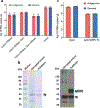
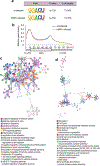
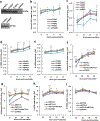
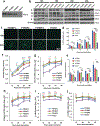
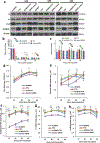
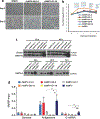
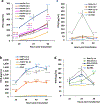


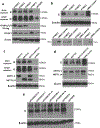

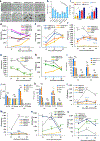


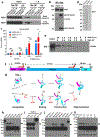
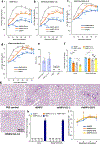
Comment in
-
Viral RNA in an m6A disguise.Nat Microbiol. 2020 Apr;5(4):531-532. doi: 10.1038/s41564-020-0689-x. Nat Microbiol. 2020. PMID: 32218507 No abstract available.
Similar articles
-
Cell type-specific recognition of human metapneumoviruses (HMPVs) by retinoic acid-inducible gene I (RIG-I) and TLR7 and viral interference of RIG-I ligand recognition by HMPV-B1 phosphoprotein.J Immunol. 2010 Feb 1;184(3):1168-79. doi: 10.4049/jimmunol.0902750. Epub 2009 Dec 30. J Immunol. 2010. PMID: 20042593 Free PMC article.
-
Nonsegmented Negative-Sense RNA Viruses Utilize N6-Methyladenosine (m6A) as a Common Strategy To Evade Host Innate Immunity.J Virol. 2021 Apr 12;95(9):e01939-20. doi: 10.1128/JVI.01939-20. Print 2021 Apr 12. J Virol. 2021. PMID: 33536170 Free PMC article.
-
SARS-CoV-2 ORF9b antagonizes type I and III interferons by targeting multiple components of the RIG-I/MDA-5-MAVS, TLR3-TRIF, and cGAS-STING signaling pathways.J Med Virol. 2021 Sep;93(9):5376-5389. doi: 10.1002/jmv.27050. Epub 2021 May 9. J Med Virol. 2021. PMID: 33913550 Free PMC article.
-
Immunogenicity of In Vitro-Transcribed RNA.Acc Chem Res. 2021 Nov 2;54(21):4012-4023. doi: 10.1021/acs.accounts.1c00521. Epub 2021 Oct 22. Acc Chem Res. 2021. PMID: 34677064 Free PMC article. Review.
-
Comparative Structure and Function Analysis of the RIG-I-Like Receptors: RIG-I and MDA5.Front Immunol. 2019 Jul 17;10:1586. doi: 10.3389/fimmu.2019.01586. eCollection 2019. Front Immunol. 2019. PMID: 31379819 Free PMC article. Review.
Cited by
-
Biological roles of adenine methylation in RNA.Nat Rev Genet. 2023 Mar;24(3):143-160. doi: 10.1038/s41576-022-00534-0. Epub 2022 Oct 19. Nat Rev Genet. 2023. PMID: 36261710 Free PMC article. Review.
-
N6-methyladenosine RNA modification promotes viral genomic RNA stability and infection.Nat Commun. 2022 Nov 2;13(1):6576. doi: 10.1038/s41467-022-34362-x. Nat Commun. 2022. PMID: 36323720 Free PMC article.
-
Roadblocks and fast tracks: How RNA binding proteins affect the viral RNA journey in the cell.Semin Cell Dev Biol. 2021 Mar;111:86-100. doi: 10.1016/j.semcdb.2020.08.006. Epub 2020 Aug 23. Semin Cell Dev Biol. 2021. PMID: 32847707 Free PMC article. Review.
-
Critical Roles of N6-Methyladenosine (m6A) in Cancer and Virus Infection.Biomolecules. 2020 Jul 17;10(7):1071. doi: 10.3390/biom10071071. Biomolecules. 2020. PMID: 32709063 Free PMC article. Review.
-
The Role of m6A Methylation in Tumor Immunity and Immune-Associated Disorder.Biomolecules. 2024 Aug 22;14(8):1042. doi: 10.3390/biom14081042. Biomolecules. 2024. PMID: 39199429 Free PMC article. Review.
References
-
- Loo YM & Gale M Jr. Viral regulation and evasion of the host response. Curr. Top. Microbiol. Immunol 316, 295–313 (2007). - PubMed
-
- Chow KT, Gale M Jr. & Loo YM RIG-I and Other RNA Sensors in Antiviral Immunity. Annu. Rev. Immunol 36, 667–694 (2018). - PubMed
-
- Hornung V et al. 5’-Triphosphate RNA is the ligand for RIG-I. Science 314, 994–997 (2006). - PubMed
Publication types
MeSH terms
Substances
Grants and funding
LinkOut - more resources
Full Text Sources
Other Literature Sources

